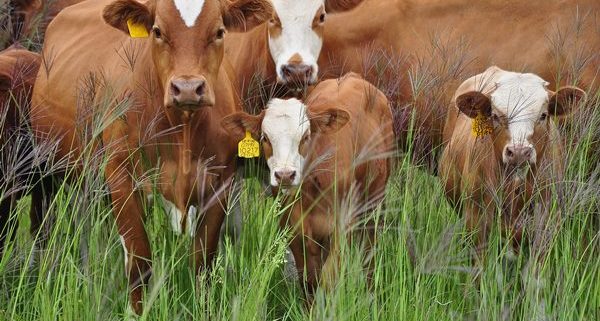Zoonotic diseases – African Farming
World Zoonoses Day on 6 July raises awareness of zoonotic diseases. The date is linked to a scientific breakthrough when French biologist Louis Pasteur successfully invented and administered the first vaccination against a zoonotic disease in 1885. The disease was rabies.
Zoonotic diseases are diseases transmitted between animals and man, caused by viruses, bacteria, parasites, fungi and even parasites. Mild to severe disease and death can occur in humans infected with implicated germs or parasites. Scientists estimate that more than six out of every 10 known infectious diseases in people can be spread from animals, and three out of every four new or emerging infectious diseases in people come from animals.
GLOBALISATION INCREASES RISK
Increased international travel and animal trade, increases exposure to new diseases and the reemergence of zoonotic diseases previously eradicated or successfully controlled. In the South African context, the following zoonotic diseases are important and are legislated as state-controlled or notifiable diseases. They include Brucellosis, rabies, Rift Valley Fever and anthrax. Apart from their direct impact on human health, these diseases negatively impact animal productivity and may become trade barriers.
HOW THEY ARE CONTRACTED
Most are transmitted through direct contact with infected animals and animal tissues. This happens with handling animal tissue during slaughtering, assisting with animal births, conducting veterinary procedures, or disposing of carcasses or foetuses. Certain occupational groups, such as animal caretakers, farmers, abattoir workers, veterinarians and para-veterinary professionals, are at higher risk of infection. The risk of infection is increased by cuts and nicks on the skin.
BRUCELLOSIS
Brucellosis is a bacterial livestock disease that manifests as abortions in infected cattle, especially in unvaccinated cattle. Humans are exposed to the bacteria mostly through contact with infected afterbirths and during assisted calving. Abattoir workers may be exposed during slaughter of infected animals.
Other routes of exposure include consumption of raw milk from infected cows and inhalation of aerosols. Symptoms in humans include fever, sweats, malaise, anorexia, headache, muscle, back and joint pain, and fatigue. These symptoms may persist and become recurrent. Commercial vaccines are available to prevent the disease in animals.
RABIES
Rabies is a fatal viral disease of mammals that affects the nervous system. In South Africa it has commonly been diagnosed in domestic dogs (and cats) even though it does affect other species, including livestock. Rabies is preventable but it is still responsible for an estimated 59 000 human deaths every year throughout the world, with 95% of cases reported in Africa and Asia, according to the World Health Organisation.
Transmission is mostly through bites from infected animals, especially in unvaccinated humans. The virus is contained in the saliva of infected animals, making it possible for transmission to occur through licks on broken skin.
Rabies causes a progressive and fatal inflammation of the brain and spinal cord, manifesting mainly in the following clinical forms:
■ The furious form – characterised by hyperactivity and hallucinations.
■ The paralytic form – characterised by paralysis and coma.
Rabies is best prevented through vaccination of domestic dogs and cats. The vaccines are commercially available and often supplied by the state free of charge. Death in exposed humans can be prevented through treatment that must be administered as soon as possible following exposure.
RIFT VALLEY FEVER
Rift Valley Fever (RVF) is a zoonotic, mosquito-borne, viral disease of sheep, cattle, goats and wild ruminants. It mainly shows as abortion storms and mortalities in young lambs. Symptoms in humans include flu-like fever, weakness, back pain and dizziness at the onset of the disease. In its severe form RVF in humans may show as blurred vision, and in worst-case scenarios a loss of sight.
The meningoencephalitis (brain) form normally shows as intense headaches, loss of memory, hallucinations, confusion, disorientation, vertigo, convulsions, lethargy and coma. The haemorrhagic fever form of RVF shows jaundice, a sign of severe liver impairment.
Patients may later vomit blood, pass blood in their stool, or show a rash caused by bleeding in the skin, bleeding from the nose or gums, and bleeding from venipuncture sites. Death may follow three to six days later.
From February to July 2010, the South African government reported 237 confirmed cases of RVF in humans, including 26 deaths according to the WHO. The risk can be significantly reduced through vaccination of susceptible animals. There are two commercial vaccines in South Africa.
Non-pregnant animals should be vaccinated with the modified live vaccine, while pregnant (or possibly pregnant) animals should be vaccinated with an inactivated (dead) vaccine. Vaccines are available through the co-ops.
ANTHRAX
Anthrax is a serious infectious bacterial disease that affects domestic animals. The bacteria form protective spores which helps them survive in the soil for many years. People can get sick after contact with infected animals or contaminated animal products. The outcome of exposure to anthrax in humans can vary from mild symptoms like a group of small itchy blisters or a bump that may resemble a bug bite, to the worst-case scenario, which is a fatal meningitis.
Commercial vaccines are available in South Africa to prevent the disease in animals. Speak to your local veterinarian or animal health technician regarding further details of various zoonotic diseases and basic vaccination programmes.
Contact us at sello.maboe@obpvaccines.co.za.




Leave a Reply
Want to join the discussion?Feel free to contribute!